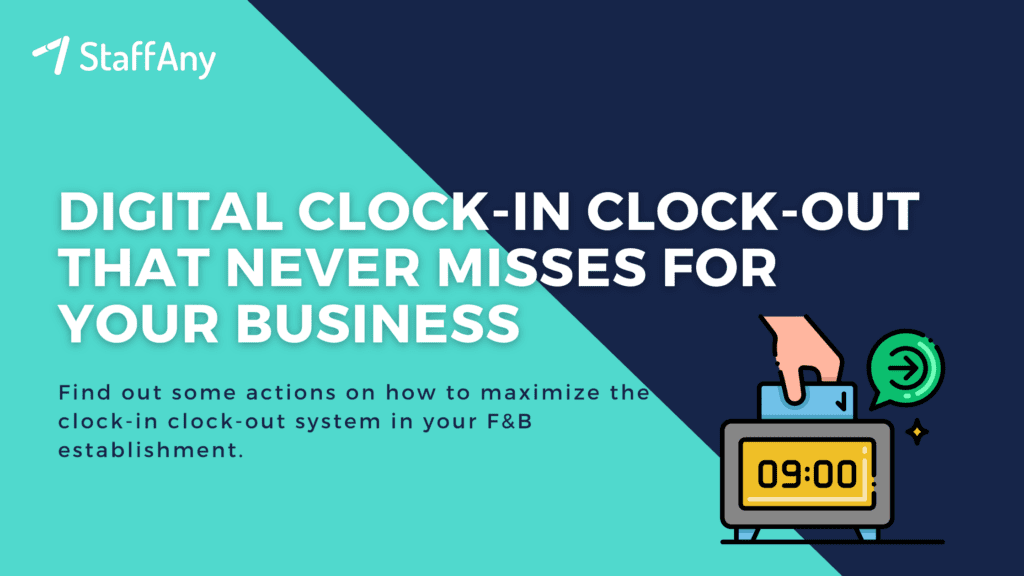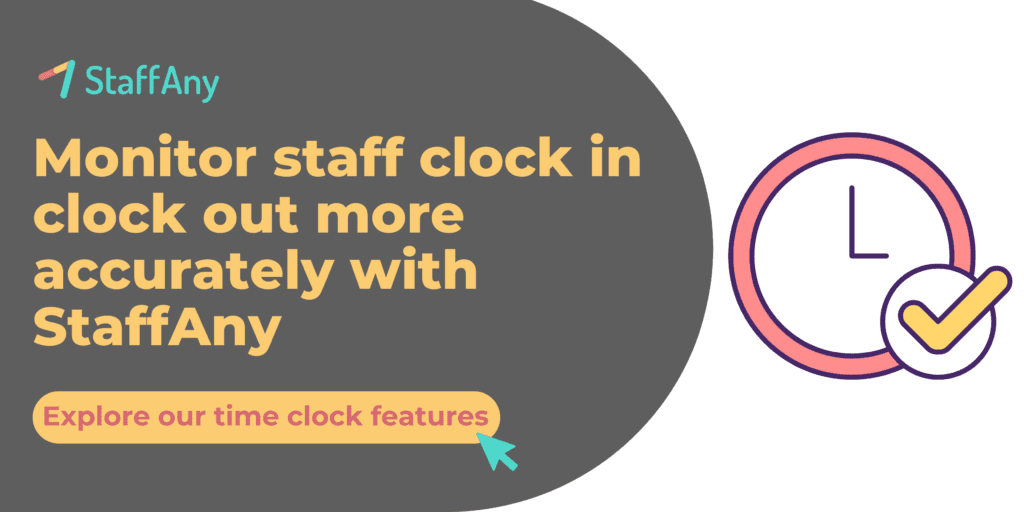
Time in and time out tracking is likely a huge challenge for you, especially if you run a shift work business like retail shops or restaurants. You get frustrated with employees who don’t record their time in and time out correctly.
Perhaps you’ve spent money on a time clock machine that should have made things simple – just stick the card in and it prints out the time, overtime, etc. Maybe you even bought a biometric clock that captures your staff’s attendance using their fingerprints. But the reality is harder than you thought. Your staff regularly forget to clock in or clock out, or maybe they clock in earlier or later than they need to and it messes up your time tracking. Even if they get that right, you still need to consolidate the timesheets and tally the numbers.. Which sometimes don’t add up.
Maybe you’re thinking of putting up a warning that you’ll deduct 1 hour’s pay for anyone who fails to clock in or out. You think about not paying them for the time they don’t log, but deep down you wonder if this is fair.
Is this a problem you face on a regular basis?
Holes in the Manual Time Clock Restaurant
Its sad but true, the old fashioned style of manual time tracking is dysfunctional. For fast-paced industries like F&B or retail, the manual time clock systems will stand in the way of running business operations efficiently, resulting to loss of productivity and even monetary losses.
According to a report in 2019, 50% of survey participants say manual data input is the most time-consuming process. Research also shows that timesheets that rely on manual input are only 67% accurate most of the time. If timesheets aren’t accurate and don’t use precise time clocks, it can cause grave problems.
For instance, your staff might get paid for hours they didn’t actually work, which can hurt the business financially. On the flip side, they might not get enough pay, making them unhappy and less motivated. It’s important to use the right time clock systems to avoid these issues, make sure everyone gets paid right, productive, and prevent businesses from financial loss.
As you can see, manual time clock practices can effect two of the most fundamental components for running businesses: time and money. The calculation process alone is time-consuming, plus inaccurate calculations result in incorrect payroll costs.
For a quick example, you hire part-time staff as one of your front-of-house staffs at a salary of SGD$11 per hour for a total work duration of 30 hours per week. With a 2% error rate, you will be charged an extra SGD$27 in 1 month from one part-time worker, and $324 per year. For 10 part-time staff, that amounts to several thousands in over reported expenses per year.
Now imagine if your error rate is higher than that due to poor mistakes from the restaurant’s manual time clock. Slowly but surely your business will go broke.
As a business owner, you also need to be aware of the other growing issue of false time tracking. It’s not just about time waste or money.
Errors in time logs can also have a negative impact on staff planning, project management, and employee morale. Incorrect billing and payroll from a false timesheet can make it difficult to prepare for what’s coming next. It can also create problems with how your team gets along and trusts each other.
How to Increase Accuracy and Productivity (plus Skip the Payroll Drama) with Time Tracking Software
Presenting to you an effective punch card and biometric alternative: Time clock software.
If you want to improve efficiency and scale up, you need to automate processes that don’t generate revenue. This will free you and your team to focus on your core business, which if you’re in F&B, is serving the best possible food and drinks from your kitchen.
The automation of clocking in and clocking out has a better impact on overall efficiency as it takes care of daily processes. Digital time tracking tools also ensure that staff can only clock in when and where they are supposed to and that they automatically clock out at stipulated times as well. This helps prevent time theft while ensuring staff are paid fairly for the actual hours they have worked.
Digital time clocks also let you will get precise tracking at the outlet level through secure clock-in based cloud technology, through geofencing, GPS-based clocking in or wifi-specific tracking, thereby reducing errors associated with manual timekeeping. These clocks also automatically tally work hours, minimizing the risk of mistakes and speeding up payroll processes. It also enables instant consolidation of time data across outlets, providing real-time information for managerial decisions.
Additionally, the synchronization with payroll systems ensures accurate compensation in employee payslips, enhancing overall efficiency in workforce management. Even better, you don’t have to spend extra money to buy time clock equipment such as punch cards or biometric devices because the digital time clock app can just be downloaded on the employee’s smartphone.
As an example of how digital time clocks help, Mr. Fish had a team that was growing and opened more seafood noodle outlets which operated at different operation hours, having to manage multiple shifts and tracking time manually. This became cumbersome and error-prone. Mr. Fish eventually needed a robust software system to efficiently manage staff scheduling, time tracking, clock-in/out records, and attendance.
The software can also easily collect and analyze data for productivity improvement needs. By analyzing the data collected through time tracking, businesses can identify tasks that are taking longer than expected and look for ways to streamline them, thus improving productivity.
Another example is PastaGo. During its growth phase, PastaGo experienced problems in tracking working hours because the biometric fingerprinting system and basic copy-and-paste scheduling through WhatsApp groups could not provide transparency in calculating the work hours, particularly when there were daily schedule changes that required personal communication with each staff member.
Without a proper timekeeping system, working hours are difficult to monitor without the use of CCTV in the restaurant. As a result, PastaGo struggled to improve overall accountability and ensure smooth operations as they were unable to properly track staff lateness and absenteeism.
[Check out more F&B businesses case study stories on this page]
StaffAny Helps F&B Businesses with a Digital Time Clock App
In the end, both Mr. Fish and PastaGo replaced their manual time tracking system with software. They chose StaffAny’s time clock app as the software solution to these problems.
With this new software, Mr Fish got a system that accommodates flexibility in staff scheduling and attendance tracking. Their store managers can easily manage staff attendance and leave, ensuring discipline and punctuality among team members. The software’s user-friendly interface also allows staff to check and track their schedules, so there is no more confusion or concern over non-transparent accounting of working hours.
As for PastaGo, they get a centralized scheduling schedule that allows them to easily track and calculate month-end wages through StaffAny. This software has saved many man-hours, allowing supervisors and managers to focus on improving operations and taking PastaGo to the next level.
StaffAny’s time clock app is designed to simplify the clock-in and clock-out process, making it easy for employees to record their working hours and companies to manage time and attendance. With StaffAny, you can take attendance at different locations and organize your working hours neatly, making it easy to transition between locations. You can learn more about StaffAny’s time clock app here.
Contact Us
Is your F&B business facing the same time tracking problem as Mr. Fish and PastaGo? Contact us now to get the best possible solution!












